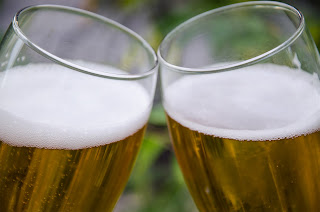
@bhopps83 @cwmoulding #BeerRun @run_beer
Over the last few weeks, we’ve had several opportunities to raise a pint in celebration of craft beer. Yes, there are, in fact, specified days on the calendar where we honour our favorite beverage. Did you miss your chance to chug one back? It’s not like we beer drinkers need a specific reason to celebrate, but during the first week of August, not one, but two days were dedicated to beautiful beers.
Brewers and drinkers have taken to social media and the Internet in recent years to promote the industry, and have taken similar strides to promote beer “days.”
IPA Day, is one such example. It was created by two “Social Media personalities” in the United States, and was intended to bring bloggers, critics, brewers, and enthusiasts together, using social media as the venue to talk about craft beers. The intent is, according to the IPA Day website, www.IPADay.org, to make beer drinkers more aware of what’s out there. The movement is in its infancy, having been established on August 2, 2011. If you missed it this year, make sure to mark your calendar for next year right now.
While we can’t tell you why organizers chose to name the day after a pale ale, we can say the history behind the India Pale Ale (IPA) is constantly being debated amongst brewers and consumers alike because, let’s face it, it’s fun to argue about beer. Here’s what stands out when talking about the style’s origins. During England’s colonization period, brewers attempted to ship popular varieties of ale to India. Due to the distance and length of the voyage, however, the recipes often went bad. English brewers then, in an attempt to outlast the voyage, began adding more hops and alcohol content, which were believed to help the preservation process. This is why most IPAs have a strong taste and a hoppy bitterness.
Shift forward a few days to August 5, and we celebrate International Beer Day (IBD). Established in 2007 by a group of young guys in San Francisco who celebrated everything beer related at their local pub. The troupe created a small website (www.internationalbeerday.com) in the process, and as it turned out, they were soon contacted by beer drinkers in England and South Africa, who also celebrated beer at their respective watering holes.
If you comb through the IBD website, you’ll find there are three goals to a successful celebration of beer. Firstly, and probably most important, to gather and share a pint with friends. Second, to toast those in the industry who provide and serve the beverages, and Finally, to recognize the fact that beer is universal. It’s everywhere.
If we’ve been able to assist our readers in finding something new to try since starting the column nearly four months ago, we’ve done our jobs and have enjoyed the process along the way. Our vision for craft beers is every consumer be open-minded about the wealth of new brands popping up across Canada. Beer is not like Canada’s Food Guide. There are more than four groups of beer. Have fun with what you choose to drink.
You can very easily make the argument that millions of people already celebrate a good brew every day at 5pm. It’s a good excuse to use when you want to unwind after a hard day at the office. So whether you celebrate beer everyday, or celebrate it on specific days we salute you. Cheers... to beers!

